Before F-35: My role in the Advanced Short Take-Off/Vertical Landing (ASTOVL) project

One of the none-ASTOVL concepts was this intriguing ‘Super Harrier’. This external load-out would have negated most of the stealthy aspects of this design. Throughout this article you will see illustrations of pre-F-35B concepts, some relate to ASTOVL, some to other projects and some are more fanciful images released by manufacturers to promote the futuristic nature of their work.
Creating a supersonic stealthy vertical take-off fighter is an extremely difficult task, and years of studies —and a healthy handful of initialisms and acronyms — paved the path to today’s F-35B. Jim Smith describes his role on the ASTOVL project and the challenges it faced.
What and when was ASTOVL, and what was your role on the project?
“The Advanced Short Take-Off/Vertical Landing (ASTOVL) programme evolved over a long period, from the early 80s through to the JSF programme as we see it today. While the initial intent was to examine the issues associated with the development of supersonic combat aircraft which could take-off in a short distance, and perform a vertical landing, the objectives evolved significantly over time, culminating in a development programme to provide a 5th-Generation stealthy Strike Fighter for the USAF, USN, USMC and International partners and customers.
During the period of the ASTOVL programme my career path took me in and out of the programme, and the best way of answering these two questions appears to be to reflect my involvement against the changing programme focus and direction.
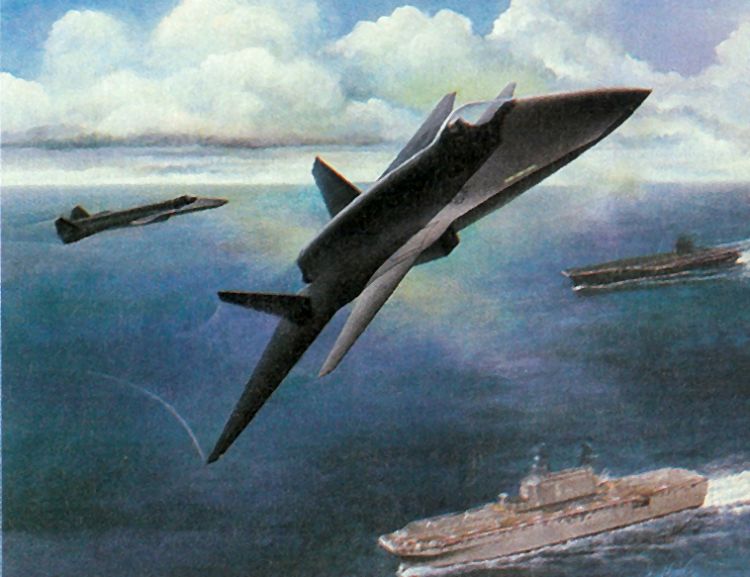
1986-88:
“I first encountered the programme in the form of the Joint UK-US ASTOVL programme which was an effort to examine the merits of different possible propulsion systems for ASTOVL concepts. Four US and four UK concepts were examined by a team called the Joint Assessment and Ranking Team (JART) in at NASA Goddard in October 1988. My role on the small UK team was to lead on aerodynamics (including ground interaction) and configuration. Other specialists looked at the mission and flight control systems and technical aspects of the propulsion system. US participation was extensive and included USAF, Army and Navy, but with NASA providing US team leadership and specialist input. My responses below will focus on this period, partly because most readers will be less familiar with the activity, but also because these designs were a long way from the operational system of today, and are perhaps less sensitive as a result.”

1991-1995
“Following a period in the British Embassy in Washington, I worked in Future Systems (Air) leading aircraft weights and performance analysis. The ASTOVL programme had evolved substantially, with DARPA and the US Navy both heavily involved in programmes looking at a STOVL Strike Fighter (SSF) programme, which evolved first into a Common Affordable Light Fighter (CALF), and eventually in 1993 into the Joint Advanced Strike Technology (JAST) programme. The UK was still engaged in the programme, leading to my involvement in configuration analysis of various designs, and, later weights analysis of (mainly) Lockheed concepts, in partnership with NAVAIR, leading towards the JSF EMD phase. I was a member of Integrated Product Teams in the US programme covering Aerodynamics, Performance and Integration, and Aircraft Weight.”
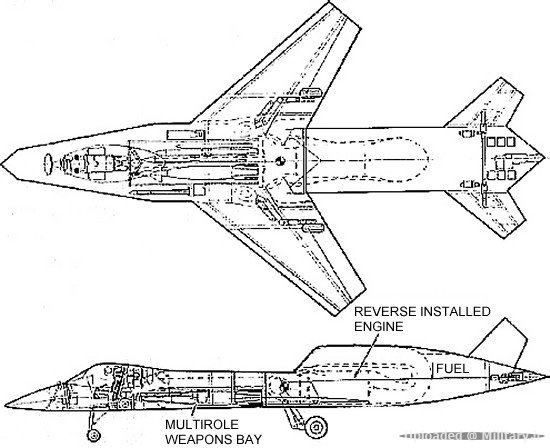
“Through this period, the focus had shifted from consideration of ASTOVL technical issues to harmonising a set of designs that could plausibly meet the needs of the USN, USMC, USAF and RN. The RN interest was, of course, replacing the Sea Harrier, and at this time the aircraft was very much constrained by the need to operate off the Invincible Class carriers then operated by the RN.”

1995-98:
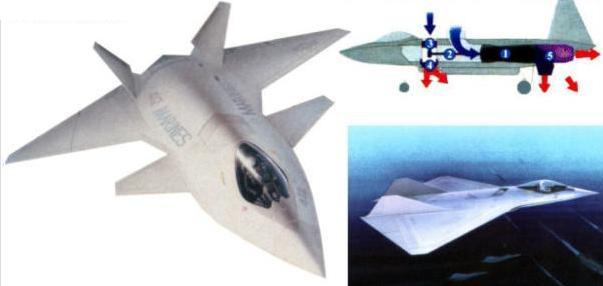
“In 1995, the UK signed up as a formal partner to the US JAST programme, which in 1996 morphed into the JSF development effort, and this coincided with my move to the Central Staffs, where I was looking to ensure Defence proposals were evidence-based, and that scientific, technical, risk and programme aspects were all well covered in the process. My direct involvement with the JSF programme diminished, but I was still involved in assessing the suitability of the concepts emerging from JSF for meeting RN needs. At this time, the focus was still only on the Navy, and only on operating from the small Invincible-class carriers.”
2002 onwards:
“In 2002 I moved to DSTO in Australia to lead the Air Operations Analysis branch. The day before I arrived, the Australian Government announced their intention to procure JSF, and that they intended using the F-35A variant to replace both the F-111 and F-18. While I maintained a strong personal interest in JSF, I had little direct involvement from that point.
The UK subsequently decided to invest in larger carriers, but have maintained their choice of the STOVL variant for both the RN and RAF.”
Which designs did you study?
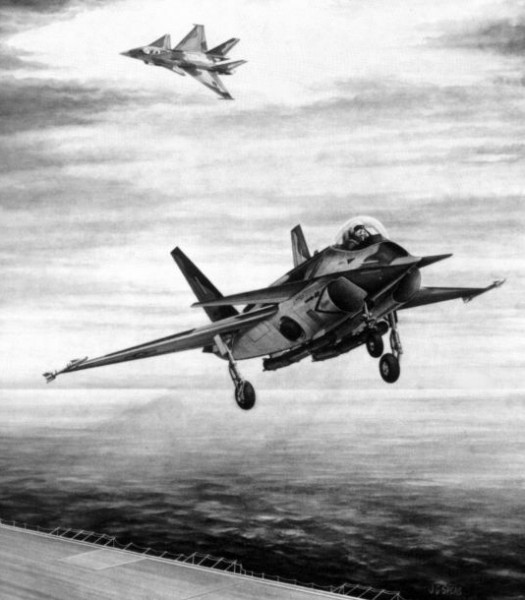
“I must open here with an admission that all this was thirty years ago, and I don’t feel comfortable that I could describe the various contenders in detail. Instead, I will focus on the propulsion systems, which was in any case the primary topic for study by the JART team.
UK concepts were developed by the four combat aircraft design teams then in existence, from Brough, Kingston, Warton and Weybridge. The US designs were developed by Lockheed, McDonnell Douglas, and I think Northrop, and Grumman.
Although there were four propulsion system designs considered, they were not quite the same. The UK concepts were:
Remote Augmented Lift System (RALS)
Tandem Fan (TF)
Ejector Augmentor (EA) and
Advanced Vectored Thrust (AVT) Kingston
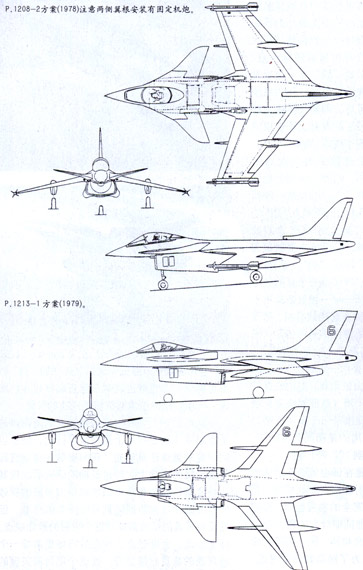
The US systems were:
RALS
EA
TF (Lockheed)
Mixed-Flow Vectored Thrust (MFVT) (McDonnell)”

Propulsion system Issues:
“Vertical Lift aircraft experience two main phenomena which can reduce available VL weight and cause issues in control in the hover – Hot-Gas Ingestion (HGI), and Suck-down. HGI causes an increase in the temperature of the air at the engine, and a decrease in density, resulting in a loss of thrust. Suck-down is a result of the high-speed exhaust gases flowing under the aircraft fuselage and wing, and increases as the aircraft nears the ground. This is why VL aircraft generally seem to ‘drop’ the last couple of feet as they land – they are being pulled down by these local flows.
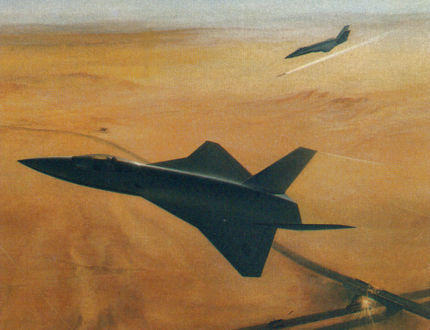
HGI is best avoided either by using relatively cool flows, for example by mixing cool fan air with the hot exhaust gases, or by physically separating the hot flows as far as possible from the engine intakes. Suck-down may be reduced by the use of a high wing configuration, and blockers or dams under the aircraft to capture and contain the flows – both of these are readily apparent on the Harrier. Lower exhaust velocity will also help.However, note that use of relatively cool low-velocity jets will impact severely on landing weights unless the mass flow is greatly increased, for example through a supplementary lift fan, or a flow entrainment device such as an ejector-augmentor.
Propulsion systems considered by the JART:

RALS systems essentially used thrust augmentation (afterburning) to increase jet velocity and thrust at the rear nozzles. Disadvantages included difficulty in keeping the hot exhaust gases away from the engine inlets so that hot gas ingestion (HGI) or re-ingestion as the US call it, could be avoided, and the greatly increased pressure and temperature loads on landing surfaces. Depending on configuration, the high-velocity exhaust sheets could induce significant suck-down, although a beneficial fountain effect can also occur with careful management of the exhaust flows beneath the aircraft.”
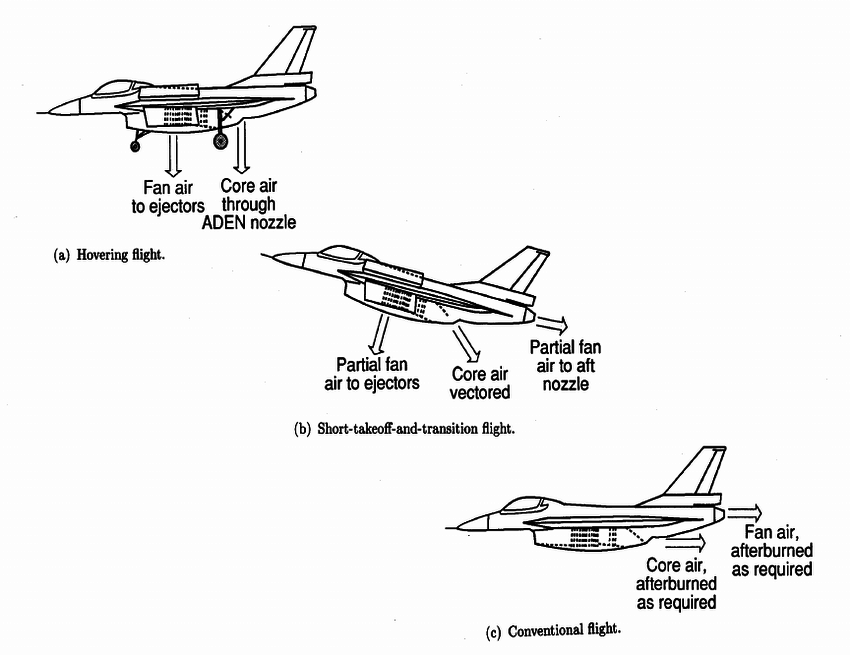
“Ejector-Augmentor systems duct air from the mixed flow at the rear of the engine forward, and use an ejector system to entrain cool ambient air, increasing flow mass and reducing jet velocity, temperature and noise. These attractive advantages are offset by the complex systems required, by the volume of the fuselage taken up by the ejectors and exhaust ducting, and by the rather unproven nature of the system.
Tandem-fan solutions use the flow through the propulsion system to produce lift at the rear nozzles, and use a clutch and shaft system to drive a forward fan in the fuselage behind the cockpit. In the configuration considered by the JART the Lockheed TF was horizontal, and a complex system of doors were required to provide the flow path for the fan. Significant risk was seen in the clutch and shaft system.”

“The Mixed-Flow Vectored Thrust concept took the relatively cool flow from the fan, mixed this with the jet exhaust and then split the flow between front and rear nozzles to provide balanced lift. This offered the prospect of manageable HGI and suck-down, but with the need to accommodate the necessary ducting to the front nozzles.
The Advanced Vectored Thrust design was essentially a Plenum-chamber-burning (PCB) version of the Harrier concept, offering much greater thrust in the lift and forward flight modes, but with all the challenges of the RALS concept, coupled with doubts about the viability of the PCB concept.”
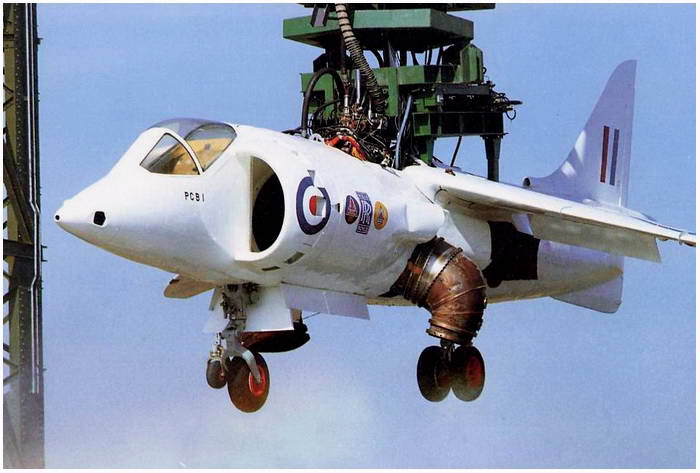
How would have the best ASTOVL concept compared with the F-35B?
“The real challenge faced by ASTOVL design teams was the management of suck-down, hot gas ingestion, ground erosion and control in the VL phase. But an additional challenge was introduced as the US Stealth programme was revealed to public gaze in April 1990, with the unveiling of the F-117 programme. A clear driver for JSF is the requirement to ‘do all that stuff and be stealthy too’. On top of which commonality of airframe configuration was sought for land-based, carrier-based and STOVL variants.
Without considering stealth, the JART took the view that the RALS and AVT solutions were going to have too much difficulty in managing HGI and ground interaction, and that the bulky packaging and unproven technology of the EA solution was also too risky. The most basic consideration of signature (in hindsight) would be another reason for ruling out the AVT concept, with its short intakes and rear fuselage bathed in hot exhaust gases. Neither the AVT nor EA concepts really provided any scope for internal weapons bays, although this was again not explicitly covered by the JART analysis.”



“The concepts that emerged as most promising were the Tandem Fan and Mixed Flow Vectored Thrust solutions. Compared to JSF, the TF design was longer, because of the horizontal (rather than vertical) shaft-driven fan. It had a simpler drive system, as this was aligned with the propulsion system, but more complex ducting. Also, I believe it had a rectangular nozzle rather than the JSF design, which originates with the Yak-141. The MFVT design by McDonnell Douglas was a very neat configuration, and looked much more attractive than the eventual Boeing X-32.”
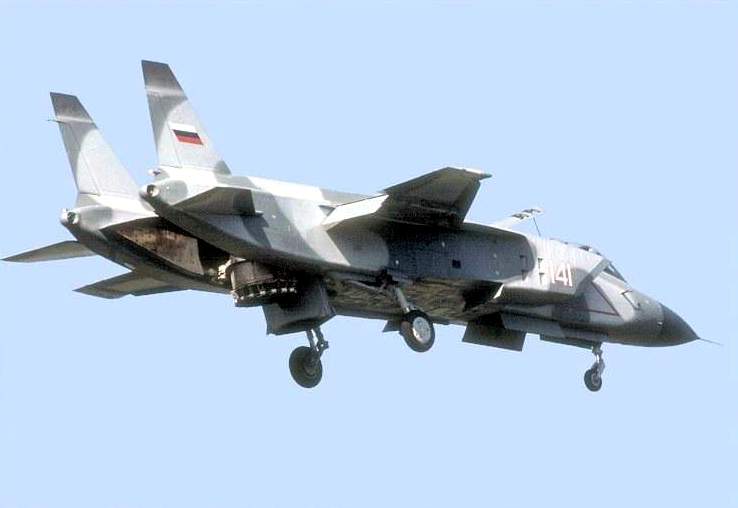
Who paid who for these studies?
The JART work was covered by a UK-US MoU. Under MoU conventions, generally each party carries their own costs, so UK studies would be covered by the UK, and US studies by the US. Later, when the UK formally joined the JAST, a financial contribution to the programme was made by the UK.

What was good and bad about the project?
“Technically, the programme was terrific. Good people from both UK and US worked hard to understand each other’s concepts and to come up with an assessment process to which all could agree. The relationships forged in the process were of enduring benefit in my subsequent posting to the British Embassy in Washington, and my later engagement with CALF/SSF/JAST.”
Have a look at Interview with a Viggen pilot, interview with a MiG-25 pilot, interview with a Gripen pilot, Top 10 BVR fighters of 2018. How to kill a Raptor, An Idiot’s Guide to Chinese Flankers, the 10 worst British military aircraft, The 10 worst French aircraft, Su-35 versus Typhoon, 10 Best fighters of World War II , top WVR and BVR fighters of today, an interview with a Super Hornet pilot and a Pacifist’s Guide to WarplanesIf I have to identify a weak point, I think we could have done more in advance to formalise the assessment process. I also considered the US approach to technical risk at that time to be relatively primitive. There was an in-built assumption (particularly in Industry) that everything could be solved with time and money, and no real appreciation that system integration was also a source of risk.
With hindsight, the programme would have been better had stealth been explicitly considered, but at the time, US activities were still in the ‘Black’ world, and information would certainly not have been shared with UK Industry.”
Is STOVL a necessary feature for a combat aircraft? Or was there a cultural bias from the USMC and the Royal Navy?
“It depends what your requirements are. The USMC has long sought to deliver rapid reaction strike to support ‘troops on the beach’, and also operates from relatively small carriers – these factors drive it towards STOVL operations. At the time of my involvement, the RN also had small carriers, and at that point could not see a path to the sort of capability it has today.
So, I am not sure that STOVL is actually fundamental for the RN or RAF. It appeared to be so at the time, and certainly still is for the USMC. There is a penalty in range and complexity that comes with STOVL.”
What the hardest thing for the designs to achieve?

“Vertical lift, while also being supersonic. When you add in the tri-service dimension and stealth (which were not part of the JART requirements), you can see that the JSF EMD programme, which required three variants to be demonstrated, to fly supersonically, to meet signature requirements, and to release weapons, was a good stab at reducing what were seen to be the main technology risks.
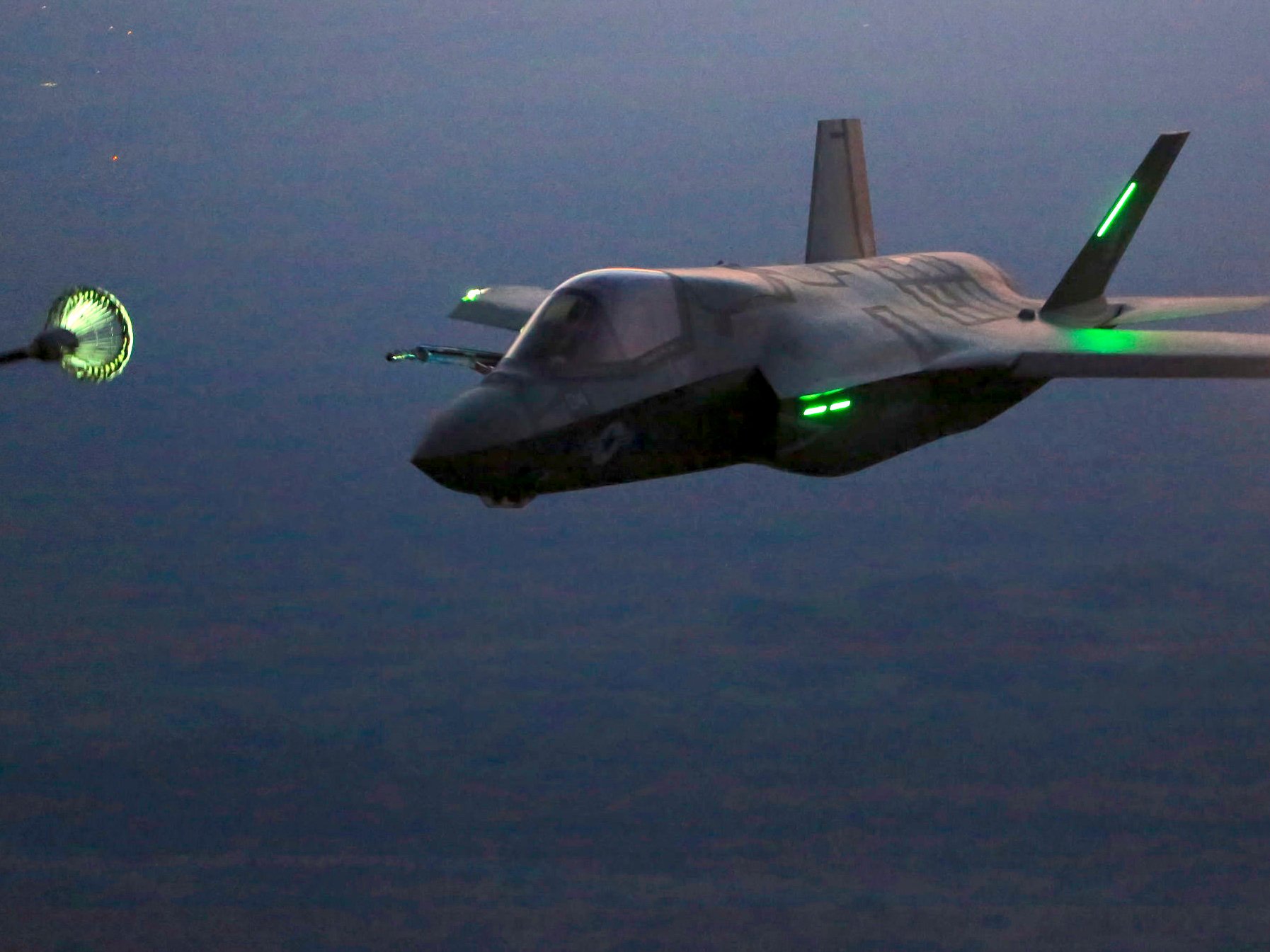
Unfortunately, US risk processes did not really consider (in the early days at least) the enormous challenges that would be introduced in generating, clearing and integrating the vast amounts of software (and hardware) required to turn the demonstrators into weapons systems.
Which was the worst concept and why?
It’s a tie between the RALS, EA and AVT concepts. There are real doubts that any of them could have been developed into a practical system. AVT and EA would have had additional challenges in meeting a low signature requirement.
If a new STOVL fighter was made today which propulsion concept should it use?
“I’d want to start with studies around the Tandem Fan and Mixed Flow Vectored thrust propulsion systems, and then look hard at the packaging and configuration considerations which will be driven by mission system, point and mission performance and signature requirements.
But I’d also want to see what the pros and cons were of a conventional aircraft designed to similar requirements, just to understand the cost-capability trade-off between STOVL and conventional designs.
Careful consideration of the requirements would be essential, to ensure that the scenarios chosen and the mission, performance and other aspects specified were reasonable, considering future geo-political and technology developments.”
What are the strengths and weakness of the F-35B’s propulsion/lift system?\
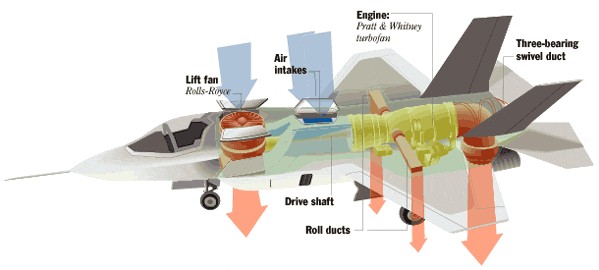
“I think the F119 is a first-class engine. The STOVL system appears to be complex, but to work well, although I have not been close enough to the programme to have any real knowledge of this. The control system appears to be notably good in the hover, and to have benefitted from the substantial technical engagement between the UK and US in this area. Creeping vertical landings are clearly a good way of increasing the bring-back mass of the aircraft, just as the use of a ski-jump increases the take-off mass available.
I have not identified any weaknesses, but would observe that the support system for the aircraft looks to be a bit of a challenge, and operators will need to work out carefully how capability and readiness is to be assured at a manageable cost. In the early stages of the programme, weight was a significant challenge, particularly for the STOVL variant. As aircraft endure in service, they tend to grow in weight, and it is likely that a continuing watch will be required on weight, and on structural load and fatigue margins.”
What should I have asked you about ASTOVL?
“I think I have given ASTOVL (as in the UK-US work of the late 80s) a fair go. There are many topics you could have asked me about on the JSF programme, but none that I am able to address.”
We want to give you more, so we need something from you. This site is entirely funded by donations from people like you. We have no pay wall, adverts (any adverts you see on this page are not from us) or subscription and want to keep it that way– please donate here to keep this site going.
If you do not wish to donate that is fine, a share online may more your style or you may just want to make me a jar of jam. If the latter, apricot please.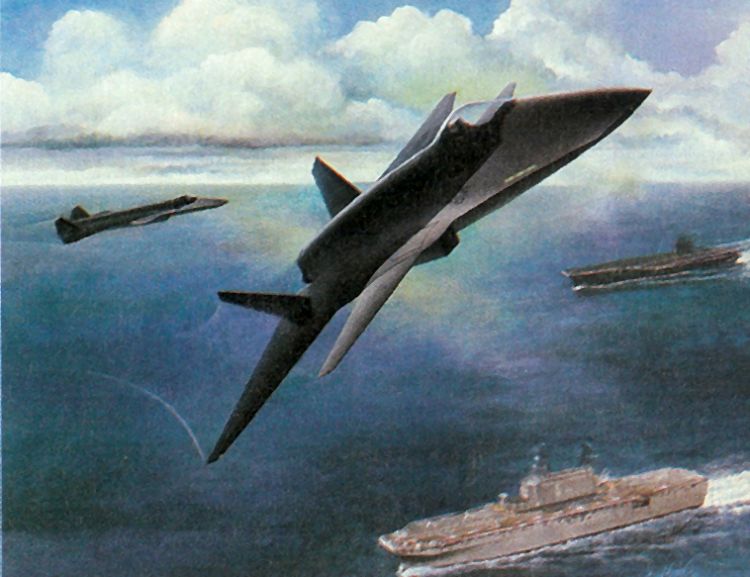

Jim, you mentioned that the RN and USMC had a definite requirement for STOVL aircraft because of the relatively small ships that they needed to operate from. Did the USAF and US Army have any equally clear need for a STOVL platform or was it (at least initially) a much more speculative exercise for them, to just investigate if this approach had anything to offer?
Forgive me for coming so late to this party, but the question of USAF and US Army interest is one that bedeviled the Harrier community for quite a long time. When the original Kestrel was evaluated by potentially interested parties, the US Army participated in the Tripartite Evaluation Squadron. When that had run its course, the Army took on 6 of the Kestrels and gave them the service designation XV-6A. These were used for further evaluations in cooperation with USAF and USN in a Tri-Service Evaluation group. And then 4 of those 6 were transferred to USAF, the other 2 going to NASA. But nothing came of any of these evaluations in terms of orders. Somewhere in the hazy days between this and the USMC buying AV-8As, a request for information was sent out to industry, and a staggering variety of aircraft and engine companies responded. In the early 1980s I had a binder full of their materials, but the whole package was classified originally for security reasons, although by that time there was obviously no need to keep it under wraps. We went through one of our periodic “clean out your containers” sweeps and that binder was targeted for either declassification or destruction. I desperately wanted to preserve it because I’d never heard that a lot of the responding companies had ever had any interest in tactical military V/STOL at all, but since the original classification authority had long since ceased to exist (bureaucracies are constantly reorganizing themselves) and nobody at any level in the Navy or Marines was willing to take the responsibility for authorizing the declassification, the binder was turned in and shredded. It was a tremendous loss to history, and I wish now that I’d had sufficient standing in the company to put some weight behind a protest. But I was in the under-30 new-hire crowd, at the very bottom of the totem pole, and had no influence to bring to bear. Jumping ahead a few years, USAF once again became briefly mired in a controversy involving STOVL aircraft in the form of AV-8Bs when they did the infamous Close Air Support Alternatives Study. We in the “Harrier Mafia” thought that AV-8B was ideal for CAS; after all, that’s what it was designed to do for the Marines. And USAF had a serious airbase survivability problem back in those “Fulda Gap” days, which STOVL could readily mitigate. But they wanted nothing to do with STOVL for a very political reason; if they admitted that their airbases were vulnerable to runway attacks that could prevent them from generating fighter/attack sorties, then they also had to admit that their C-130s and C-141s and C-5s and B-52s could also be locked out or stuck on the ground, and that was a step they just couldn’t take. There might have been a STOVL solution to fix the F/A problem, but there were no such options for the cargo and bomber and taker fleets other than to remove them from the theater and accept huge logistic and operating tempo problems. So they ignored the AV-8B discussions as best they could. One day I turned on the TV and found that there was a live broadcast of hearings by Senator Carl Levin on this very subject, USAF Close Air Support, and he was asking specifically about whether the AV-8B was being considered. I popped in a VHS tape and recorded what I could of it, and there was some very interesting dancing on the part of the USAF witness. But of course in the end nothing came of that, and that’s the last time I ever heard of USAF interest in STOVL, except very briefly in connection with JSF many years later.
At the time of the JART, it was clear the USN, USAF and USMC all had requirements in the future to replace (I’m guessing) essentially F-16, F-18 in the tactical strike role, in a future which they would have anticipated to be LO. US Army did have one rep (as I recall) on the JART, but did not operate combat aircraft other than helicopters.
However, at that time, there was no clear requirement for a single tri-service solution. I believe the JART exercise was essentially about understanding which propulsion systems looked promising, with a sub-text from the US side, that internal weapons bays might be needed.
The exercise clearly shaped the programs that followed, but was more a technology-driven than a requirements-driven one – no one was sure ASTOVL was a feasible concept.
Jim
very interesting article. Do you have any higher quality prelimimary drawings, as used in your article? I collect things that fly drawings for my screen saver.
Brian
Hi Brian, Jim did not source these illustrations, they were sourced online.
There was another path in parallel to ASTOVL and its precursors, involving McDonnell Douglas, BAe, and Rolls Royce. At the time I was in MDC’s Advanced AV-8 & V/STOL group. Our charter was to find substantial upgrades to AV-8B that would keep it viable “well into the 21st Century” as we used to put on almost everything we created. We called this general effort “Harrier III” and it involved adding fuselage plugs and wingtip AIM-9 pylons and system upgrades and things like that. The minimum-change version was called “Harrier III Low End” and a more extensively-changed version was “Harrier III Medium.” But “Harrier III High End” was reserved for something a lot more interesting: A supersonic machine. By the time we were done, it looked a lot more like an F/A-18 than an AV-8B. The demonstrator was going to have a Pegasus engine core with completely different exhaust routing, the “cold” and “hot” rotating VTOL nozzles being blocked off for cruise, and flow directed out of a conventional tailpipe with afterburning capability. The production version would have had a more powerful Eurofighter engine core to deal with the inevitably higher weight of High End compared to AV-8B. The aircraft and systems designs for Harrier III High End, also known as Harrier 21, were approached differently than any other airplane I worked on in my 42-year career. Basically MDC and BAe each took the engine parameters and mission performance requirements and, working separately, created configurations. Those were then compared with each other and the best features of each used to create a final joint configuration. The performance was stellar for the time; supersonic dash, longer range than Harrier IIs, and all kinds of nice-to-have things in the subsystems. We got some major encouragement at one of our coordination meetings in St Louis, when the Rolls Royce rep said that the Royal Navy had heard about what we were doing, and were willing to kick in 2 billion pounds if we’d add a rather challenging CAP loiter requirement. Naturally we did. Eventually we were allowed to brief a few Marine Corps guests on what we were doing, and they reacted with wild enthusiasm. This was what they had always said they wanted, a “hovering Hornet,” and they jokingly argued about whether to call it “Hairnet” or “Hornier.” But then the company’s ASTOVL group got wind of our activities and lowered the boom on us. They pointed out that supersonic future V/STOL was their turf, and that the only thing that our Harrier 21 had in common with AV-8B was “the air in the tires” as they put it. Their management leaned on our management, and the Harrier 21 was terminated. All that’s left as far as I know is an interim data package showing the general airframe/propulsion system integration and one or two other subsystem layouts, plus a photograph or two of a model that was made. The whole thing seems to have been overlooked by history with the exception of the two Rolls Royce engine concepts, which are listed somewhere online – the RB 578 for the Pegasus-based demonstrator and the RB 571 for the proposed production engines. But it happened, and if it hadn’t been killed by a rival design team, it could have gone into service decades before JSF, and fulfilled the STOVL needs of the USMC, the RAF, RN, and who knows how many others. Of course we had no idea at the time that the ASTOVL “competition” had been created as nothing more than a cover story for a long-running DARPA/Lockheed STOVL technology development effort. That whole business is on the JSF program’s official history site and it makes interesting, if frustrating, reading. So the irony is that our ASTOVL group never had a chance of winning in the long term, while Harrier 21 might well have undercut the need for those advanced technologies in the first place. But I’m glad we didn’t know what was going on behind the scenes back then, because we were supremely proud of what we’d been able to put together, whether anyone bought it or not.
Fascinating! I would love to find out more for the site, may I email you?
There’s not much more that I can share with you. Details of the configuration would, I’m sure, still be considered Boeing Proprietary and so they’d have to be approved for external release. I’m currently trying to get permission to write something about 1943-44’s McDonnell XP-67 prototype, and I’m having to get release even for that, where there can’t possibly be any sensitivity. So the very general programmatic overview that I’ve provided is probably all I can do on the Harrier follow-ons. I can check with my contacts and see what they say, but I’m not optimistic about the outcome.
Extremely interesting comment. I can say with some confidence that there was no visibility of this effort in the UK team when I was involved in the Joint Assessment and Ranking Team Exercise. The McDonnell ASTOVL concept was in many ways regarded ar very promising, and was subsequently used by NASA for control system evaluation – I flew a NASA ‘model’ of the McDonnell MFVT in the Ames large motion simulator, looking at displays for deck landing on a pitching ship.
I thought BAe had hopes of collaborating with McDonnell on that concept as well. Of course, BAe was going through significant change in parallel with all this. Harrier developments were very much Kingston-based, and, while the ASTOVL concepts came from Kingston, Brough, Weybridge and Warton, by the later stages of the program all Military Aircraft concept work was driven from Warton.
The CALF/SSF projects were later joined by the UK, and I was part of that. Somewhere along the way by that time (I was not involved in the down-select process) the McDonnell MFVT propulsion concept had ended up being largely replicated in the Boeing design, and the Lockheed tandem-fan concept had evolved into the shaft-driven vertical lift fan of the X-35.
I’m not surprised that there seems to have been little awareness of our effort by other advanced STOVL concept programs. There was precious little between our own Harrier 21 people and the ASTOVL group that was in another building down the road from us. It must have been even more of an impediment to have multiple sites scattered over the UK. Earlier this evening I was going through old papers and I happened to run across the business cards of the Rolls Royce people we dealt with for the propulsion side of things, but I didn’t have interactions with the BAe people myself. That was what our designers and systems people did; I dealt more with operations and requirements. Once our Harrier 21 had collapsed, I actually ended up migrating to the ASTOVL effort. There are stories to tell there too, about what was going on behind the scenes, but that’s a whole other subject.
Jim, I stumbled on your article on ASTOVL while going through umpteen searches on the web for various VTOL operating weights of F-35, AV-8B and Sea Harrier to populate a chapter in my morphing aircraft book. Interesting to look back at your association with the various ASTOVL programs. While you and I worked together in the Embassy, we largely ran separate courses. I began a dialogue with the USMC Harrier folk to explore a joint RN/USMC program, leveraging my SHAR background, in late 1989 and under a remit from MoD DOR(Sea). Over the next year it bore fruit. This success was very strongly influence by the USMC desk officer and the RN DOR(Sea) offcier who had flown together as lieutenants out of Cherry Point. I was given advice by the US side to stay disengaged from the NASA/RAE effort. The key was to incorporate signature discussions from which NASA/DRA was devoid. Sounds awful, but I did what I could to kill interest in it – had to step carefully in the Embassy. USMC bought into a joint effort with the RN at high level. I was briefed into the DARPA activity by the future PM of CALF – DARPA had also moved on. AD DFS (a friend of yours and mine) and DOR(Sea) were enthusiastic. I staffed the first meeting in the US of MoD and DoD parties which led to an agreement to establish an MIEA. I drafted this and submitted it before leaving the Embassy in late 1992. Efforts moved on. The MIEA led to an MOU with the MoD becoming a funded partner to the second CALF phase. I had returned to the UK for staff course and a follow-on appointment but, in August 1994, I was pulled and sent back to the US as the on-site UK PM and DARPA deputy PM for CALF (one of 3-deputies). As a foreign national, being a DARPA deputy was without precedent (so far as I know although, it may have happened again since that time…who knows). It was immensely exciting. US politics took a turn and in December 1994, when CALF was merged with JAST at the Direction of Dep. Sec. Def. in response to Congressional instruction, I got an office in JAST and part of the program. The UK investment at the time was around $17-million, as best I can remember and was tied to CALF contract deliverables. There was an irony and a tense moment. The JAST a program had had an overture to include RAF representation turned down by Dep. Sec. Def,. because the technical establishment did not believe that there was a way to have foreign participation in JAST because of signature sensitive technology and the JAST product – aircraft design and signature control were seamless. For a couple of days, we wondered if I would be sent home. However, not to be. I stayed on and was the UK SSEB representative for down-selection into the CDP. Having had the Embassy job, a navy blue affiliation, Sea Harrier experience, I was probably a reasonable fit – most important of all, was that I had experience of the US acquisition and military system and could step sensibly and nimbly with the security, requirements and contracting sides which was essential. I left the program in 1997. Over the years, subsequently, I watched developments. The one that I found dismayed me the most was the decision to pursue big aircraft carriers which stole the benefit of ASTOVL – I wrote a couple of papers on it but, no doubt, sounded like a crank. Post this, having been at DARPA as a deputy, appetite to develop advanced technology wetted, I later was hugely privileged to return to DARPA as a PM, as you know. I have it in mind to write an account, sometime. Phil
Fascinating parallels, because after JART and the Embassy, I ended up in DFS(Air) providing Weights advice to the program through an MoU with NAVAIR, and also spent time in two separate IPTs as JSF was emerging from CALF and JAST, providing advice on aerodynamics, performance and integration.
JART was handicapped by lack of visibility of stealth developments. Nevertheless the propulsion system
conclusions were robust, and the recommended propulsion systems, MFVT and Tandem Fan, were in the end what were developed for the X-32 and X-35.
Once I moved on to Central Staffs my focus changed to MoD decision making, and my involvement gradually wound back.
“I have it in mind to write an account…”
Yes please Sir.